To assist with the calculation of stretch-out lengths, the program contains a table that allows the user to set up custom values that are to be used for certain diameter types. This table can be customised to reflect the sizes most frequently used. The diameter values are then used from the table and substituted into the formulae that are used for calculating the stretch out - see the topic Circular Developments for more details.
- Click File > Setup > Pattern Database > Effective Diameters or select the Pattern Database icon from the Utility Bar to display the Effective Diameters.
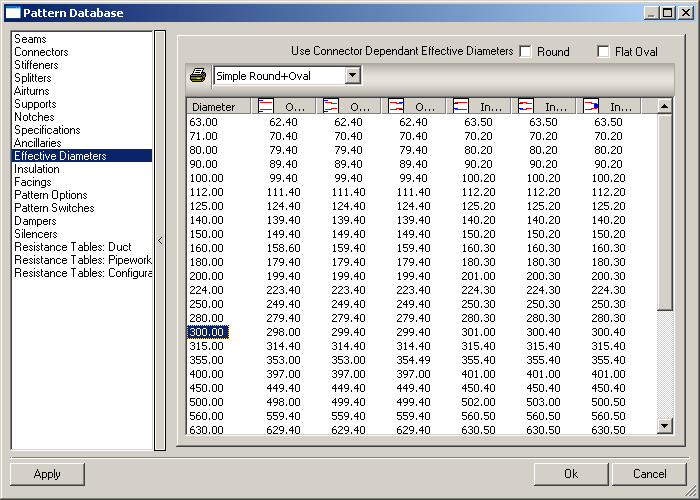
The table is displayed as above. It is set out with seven columns. The first one relates to the diameter that will be entered on the pattern. The next three columns are used to set the diameters that would actually be used for an internal connection. The last three columns are used to set the diameters that are actually used for an external connection.
At the top of each of the six internal and external columns, there is a picture showing the type of connection when the value is to be used. This gives the user more control over the use of the values, so that variations for certain connections can be given. The six types are described below:
Outside Straight

This column represents a straight pipe connecting inside to another pipe or fitting. This is shown by the red lines being positioned inside the blue lines. The value entered into this column is substituted into one of the formulae mentioned earlier when this type of connection is required. This is displayed in the program as Diameter Type field set to Outside.
Outside Large End

This column represents a large end reducer connecting inside to another pipe or fitting. This is shown by the red lines being positioned inside the blue lines. The value entered into this column is substituted into one of the formulae mentioned earlier when this type of connection is required. This is displayed in the program as Diameter Type field set to Outside.
Outside Small End

This column represents a small end reducer connecting inside to another pipe or fitting. This is shown by the red lines being positioned inside the blue lines. The value entered into this column is substituted into one of the formulae mentioned earlier when this type of connection is required. This is displayed in the program as Diameter Type field set to Outside.
Inside Straight

This column represents a straight pipe connecting outside to another pipe or fitting. This is shown by the red lines being positioned outside the blue lines. The value entered into this column is substituted into one of the formulae mentioned earlier when this type of connection is required. This is displayed in the program as Diameter Type field set to Inside.
Inside Large End

This column represents a large end reducer connecting outside to another pipe or fitting. This is shown by the red lines being positioned outside the blue lines. The value entered into this column is substituted into one of the formulae mentioned earlier when this type of connection is required. This is displayed in the program as Diameter Type field set to Inside.
Inside Small End

This column represents a small end reducer connecting outside to another pipe or fitting. This is shown by the red lines being positioned outside the blue lines. The value entered into this column is substituted into one of the formulae mentioned earlier when this type of connection is required. This is displayed in the program as Diameter Type field set to Inside.
As a default setting, the effective diameter table is set up to show commonly entered diameters as used within the metalwork industry. The diameters are used in conjunction with the columns described above. Entries can be changed by clicking on the appropriate field and typing in the preferred value, and new entries can be added or unused ones deleted by clicking the green 'new' icon or the red cross 'delete' icon as appropriate.
Using the Effective Diameter Table
In order for these values to be used by the program, a switch needs to be activated in the Pattern Database.
- Click File > Setup > Pattern Database > Pattern Switches
- Ensure that the Effective Diameters box in the Miscellaneous area is checked:

Below are two examples of the stretch out being calculated, one using the Effective Diameter values, one not. In both examples, the Pattern Option settings in the Circ/Oval Dev are set at Nominal.
Example One - Not using the Effective Diameter Table
- Ensure that the Effective Diameter switch in the Pattern Switches is not checked.
- Go to Utilities > Item Folders > Round and select Round Pipe (CID 41) and set the Diameter and Length to 100, as below.

- Click the Options tab and click in the Diameter Type field until it is set to Outside.
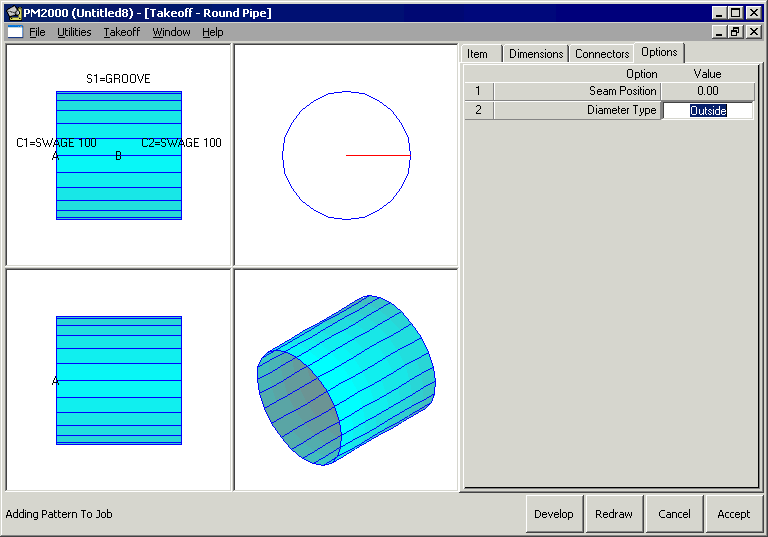
- Click on the Item tab, and change the Gauge to 0.8.
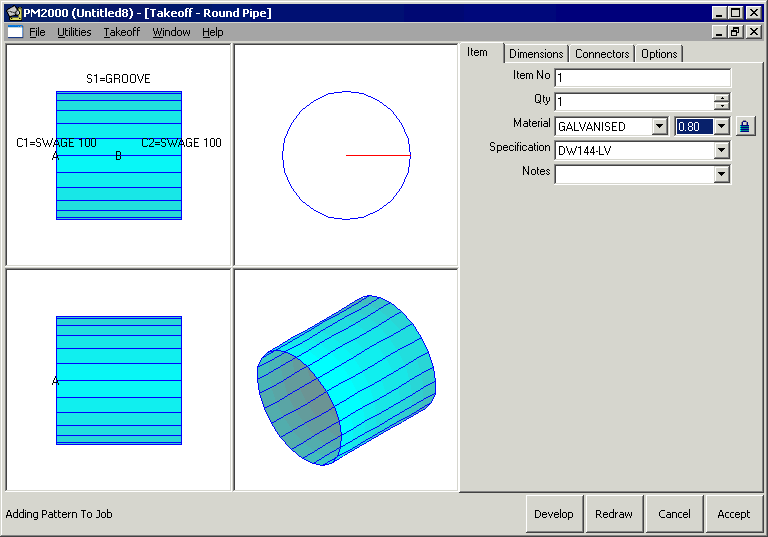
- Click on the Connectors tab, ensure that no connectors or seams are used:
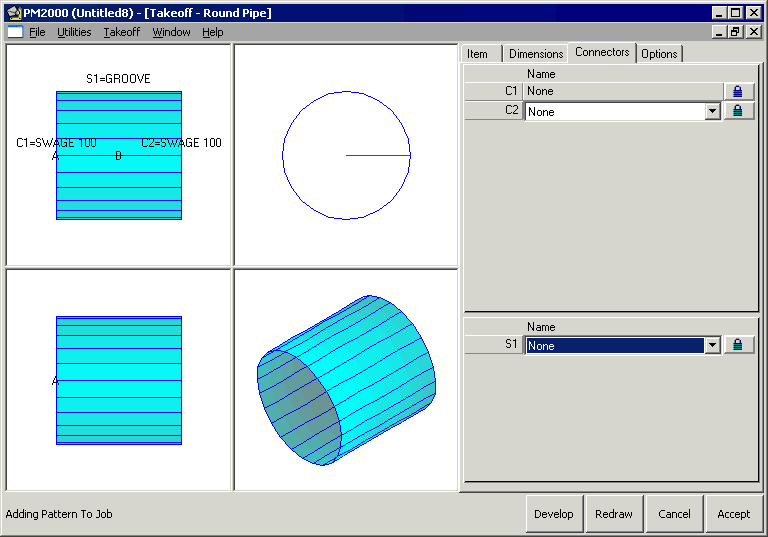
- Click Develop and the Y Size shows as 311.646:
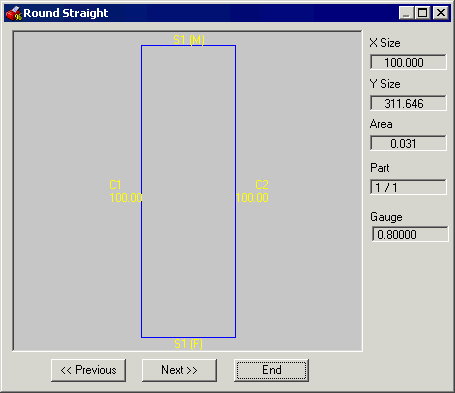
This has been calculated as follows. Using the formula described in the Circular Developments topic, for Nominal Diameter we know that Outside Diameter Type = (diameter - gauge thickness) * pi, which calculates in this example as (100 - 0.8) * pi, or 99.2 * pi, which gives us 311.646.
Example Two - Using the Effective Diameter Table
- Ensure that the Effective Diameter switch in the Pattern Switches is checked.
- Click on Effective Diameters table, again as explained earlier, so that the 100 mm line reads as below:
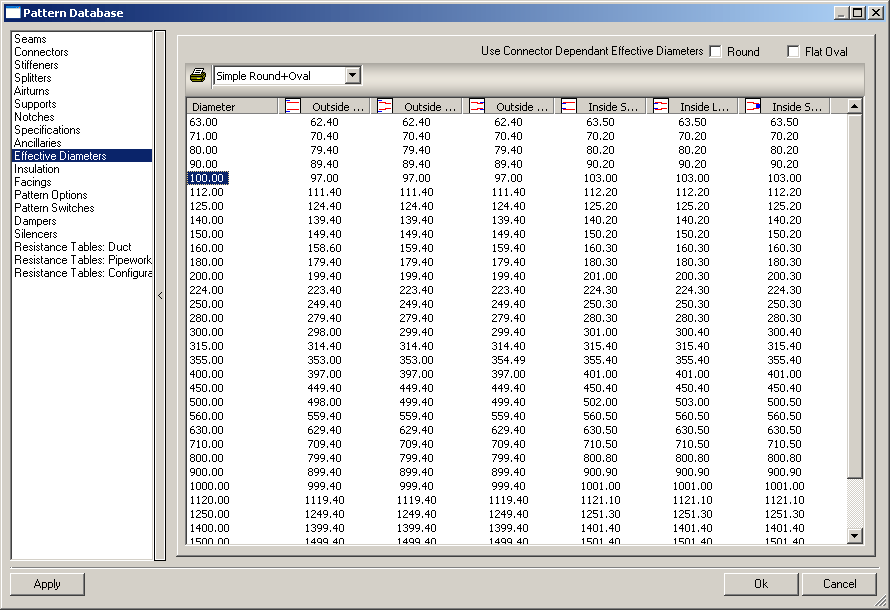
This will force the program to override its normal calculations by substituting the effective diameter for the actual diameter in the formula, giving the user control over diameter sizes.
- With the same data input as in the previous example, press Develop and the Y Size read as 302.221:
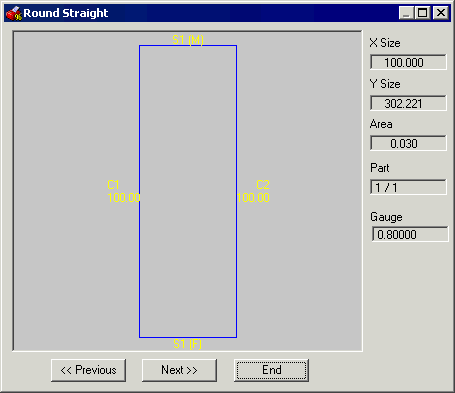
This has been calculated as follows:
Outside Diameter Type = (diameter - gauge thickness) * pi, and as the Effective Diameter of 97 has been used instead of the actual diameter of 100, this calculates in this example as (97 - 0.8) * pi, or 96.2 * pi, which gives us 302.221